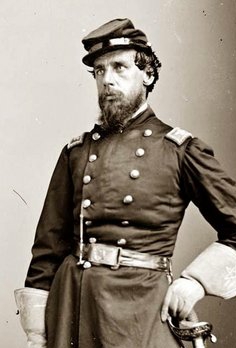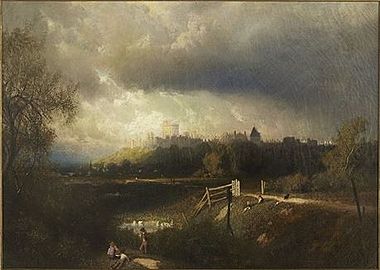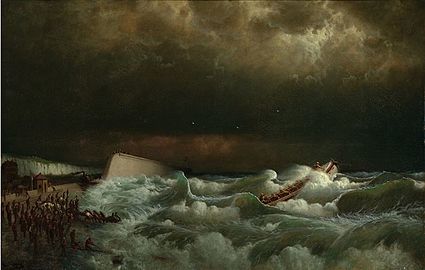James Fairman facts for kids

James Fairman (born 1826 in Glasgow, Scotland – died March 12, 1904, in Brooklyn, New York) was a talented artist, teacher, and military officer. He was known for his landscape paintings and for being an art critic.
Early Life and Art Training
James Fairman's father, Laurenz Fehrman, was a Swedish military officer. He had to leave his home country and moved to Scotland, where he met and married James's mother, Mary Farquharson Black.
In 1832, after his father passed away, James and his mother moved to the United States. They made their home in New York City. James showed a natural talent for drawing from a young age. In 1842, he started taking evening art classes at the National Academy of Design. Soon, he became a full-time student there, encouraged by a portrait painter named Frederick Styles Agate. After finishing his studies, he worked as an apprentice at Harper & Brothers, a well-known publishing company in Manhattan.
In 1851, James traveled to London to visit the Great Exhibition, a huge display of inventions and art from around the world. He later said that seeing this exhibition was a "revelation" for him, meaning it greatly inspired him.
For the next ten years, James became very involved in the Abolitionist movement, which worked to end slavery. He found he was good at public speaking and even took a course to improve his skills. In 1858, when there was a debate about whether to remove Bible study from New York public schools, James spoke against the change. He ran for a spot on the school board committee and was elected. He also tried to run for Congress but was not successful.
Serving in the Civil War
When the American Civil War began in 1861, James Fairman joined the Union Army as a Captain. However, he left after only four weeks because he tried to form his own military group. He then became a recruiter for another regiment, helping to find new soldiers.
Later, he joined the 96th New York Volunteer Infantry and became a colonel. After just three weeks of training, his unit took part in the Peninsula Campaign, a series of battles. During this time, James had some disagreements with other officers. He was also criticized for insulting a higher-ranking officer. Because of these issues, he was asked to resign from the army in September 1862, and he did.
Later Art Career
After leaving the army, James Fairman returned to New York and opened his own art studio. He also gave lectures for the Cooper Union, an organization that provides education. Until 1871, his paintings were shown at the National Academy and the American Watercolor Society. However, he continued to have disagreements with others, which made him feel like an outsider in the art world.
Because of this, he left the United States and traveled through Europe. He spent several months in Palestine, a region in the Middle East. In 1872, he was drawn to the paintings of the Düsseldorfer Malerschule, an art school in Germany, so he opened a studio there and stayed for three years.
In 1875, he moved to Paris, France, where he also lived for three years. After that, he spent some time in London, England. From time to time, he would visit the United States to sell his paintings. He would organize special events for these sales, inviting journalists and giving lectures where he shared his ideas about art, sometimes criticizing the traditional art scene.
James Fairman returned to the United States in 1881. He lived briefly in Chicago, where he had friends he had helped after the Great Chicago Fire. For one year, he taught art in Olivet, Michigan. Then, he moved back to New York, where he passed away in his studio in 1904.
Selected Paintings
-
Edinburgh Castle After the Storm
-
Jerusalem from the Mount of Olives





